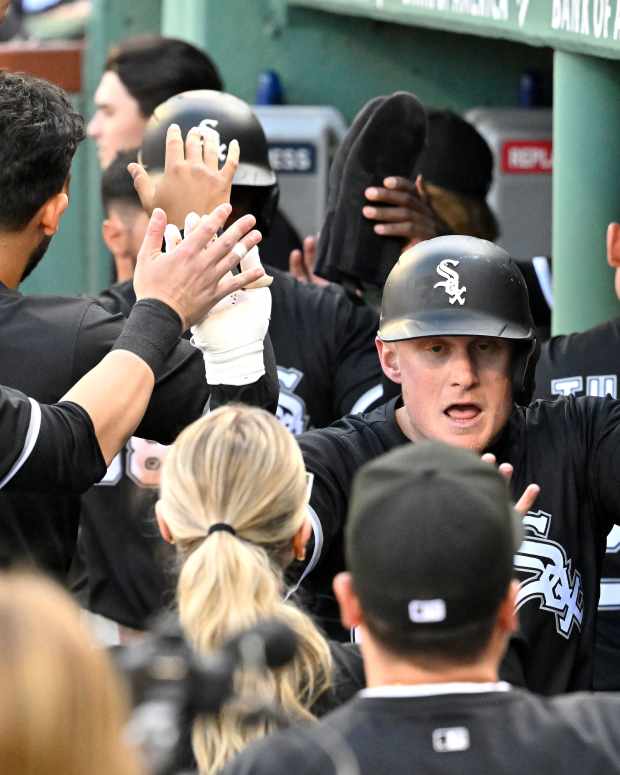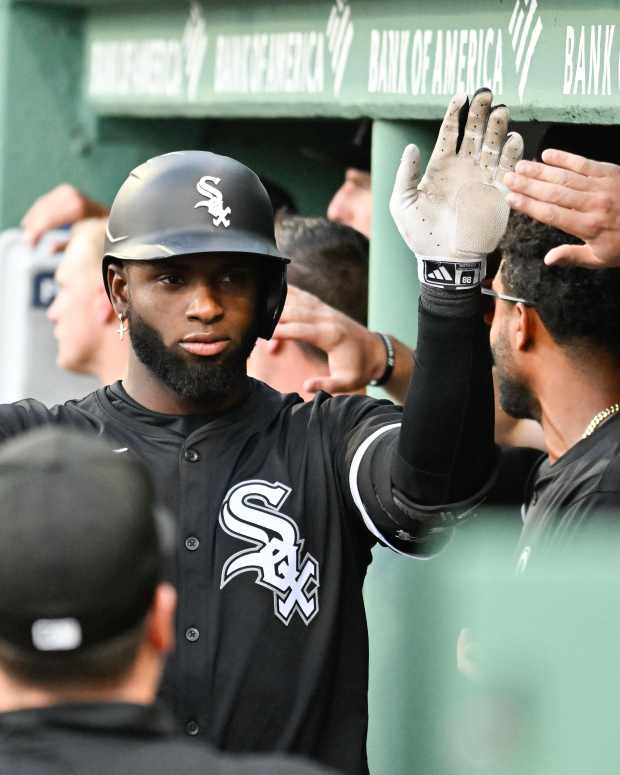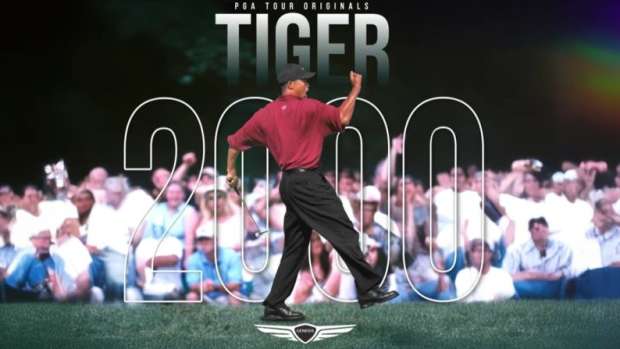Where Are They Now: What Happened to Chuck Connors?
Welcome to week three of this series. If you missed last week's stories, make sure to check out and learn more about former Chicago Cubs second baseman Glenn Beckert and fellow On Tap contributor Marty Lavelle's piece on reliever Kyle Farnsworth.
Going into this week of Where Are They Now, I was curious as to which former Chicago Cubs players played professionally in different sports in part because it's NFL Draft week.
Obviously, guys like Bo Jackson and Deion Sanders came to mind in terms of notable multi-sport athletes, but neither played for the Cubs.
However, thanks to extensive research on the Google machine, Kevin Joseph Aloysius 'Chuck' Connors played for the Boston Celtics and Brooklyn Dodgers as well as the Cubs before going on to become a successful actor.
Wait, who?
Connors disliked his first name, which led him to Chuck once he entered college, where he played basketball and baseball for Seton Hall. Ironically, he ended up naming one of his sons Kevin during his first marriage with Elizabeth Jane Riddell Connors. They eventually divorced in 1961.
Anyway, Connors is one of 13 athletes to play in the MLB and NBA. The list includes Danny Ainge, Frank Baumholtz, Gene Conley, Dave DeBusschere, Johnny Gee, Dick Groat, Steve Hamilton, Mark Hendrickson, Cotton Nash, Ron Reed, Dick Ricketts, and Howie Schultz.
Connors' baseball career was not long nor successful, at least at the major league level. He finished his career with a -0.8 fWAR at the major league level. He grew up adoring the Dodgers and dreamed of playing for them one day. He went on to play in just one major league game for the Dodgers in 1949 and 66 games with the Cubs in 1951.
According to Baseball-Reference, Connors began his minor league baseball career in 1940 at age 19 with Brooklyn Dodgers' affiliate Newport Dodgers where he played in just four games. He finished with just one hit in 11 at-bats. He was eventually released and sat out the 1941 season.
He eventually joined the Norfolk Tars, a minor league affiliate of the New York Yankees in 1942. He played 72 games, hitting .264 with five home runs in 250 at-bats. By season's end, he enlisted into the Army. He spent most of his years in the military stateside and as a tank-warfare instructor.
Fast forward to 1946 after his military discharge, Connors joined the Boston Celtics in the inaugural season of the Basketball Association of America (BBA) at age 25. The league eventually became known as the National Basketball Association (NBA) in 1949. Connors' professional basketball career was similar to his baseball career. Short and not good.
Connors played in 49 games during the BBA's first season, averaging 4.6 points per game. In total, he scored 94 field goals resulting in 227 points. He had 84 free throw attempts and completed just 39 of those attempted. For his career, he shot just 25.2 percent from the field. All in all, it was bad. The Celtics finished the season 22-38 and failed to qualify for the playoffs.
However, Connors is noted as the first basketball player to ever shatter a backboard on November 5, 1946. Weirdly enough, he didn't do it with a dunk, he did it with a jump shot during pregame warmups at the Boston Arena. The ball caught the front of the rim and the backboard crumbled because a worker hadn't installed a piece of protective rubber between the rim and the backboard.
Fans are glad to see the NBA has upgraded its backboards since the incident.
During the offseason, he ventured back into baseball as he ended up in the Dodgers' minor league system. He started with the Newport News Dodgers, a Class B affiliate, and played more than 100 games for the first time in his professional career. He batted .293 and smashed 17 home runs in 430 at-bats.
After the baseball season, he played four games in the 1947-48 BBA season with the Celtics before he decided to leave the team to pursue baseball full-time.
In 1947, he was promoted to the Class-AA Mobile Bears where he played in 145 games batting .255 and hitting 15 home runs in 514 at-bats. In 1948, he did not make the major league Dodgers but was sent to the Montreal Royals, the Dodgers Class-AAA affiliate.
Connors slashed .307/.385/.496 in 147 games, his best season as a professional at that point in time. He hit 17 home runs and drove in 88 runs. He finished with a career-high with 157 hits and 254 total bases.
He finally made it to the show in a pinch-hit appearance in 1949 with the major league squad. For those wondering about his one game with Brooklyn: unfortunately, he did not make the most of his one plate appearance as he hit into a double play. He never played with Brooklyn again. Ironically, he never hit into a double play at the major league level ever again neither.
Connors had another solid season in the minors, finishing with career-highs in on-base percentage (.421), walks (84), runs batted in (108), and runs scored (90) in 1949.
After a similar 1950 campaign, Connors and Dee Fondy were traded to the Cubs on October 10, 1950, for Hank Edwards and cash. Edwards played just 35 games with Brooklyn before the Dodgers put him on waivers, where he was eventually picked up by Cincinnati in July of 1951. Fondy ended up playing seven seasons with the Cubs, slashing .285/.323/.422 as the North Side's first baseman.
In 66 games with the Cubs in 1951, Connors -- at age 30 -- compiled 48 hits including two home runs, scored 16 runs, finished with 18 runs batted in, and hit .239. He maned first base defensively.
Both of his home runs were hit while playing on the road. Connors was ejected for arguing a home run call on July 24, 1951, in a home game against none other than the Dodgers. The home run was hit by Dodgers' first baseman Gill Hodges and tied the game at 2-2 in the top of the eighth inning. The Dodgers won 6-3 in extra innings. Jackie Robinson went 0-for-4 with a run scored and a walk.
Connors spent the majority of the 1951 season in the minors, playing 98 games for the Los Angeles Angels, the Cubs Triple-A affiliate in the Pacific Coast League. He finished with career highs in home runs (22) and batting average (.321). The next season, his numbers trended down, leading him to believe he could not play professional baseball anymore.
Since he lived near Hollywood, Connors took an interest in an acting career. He was first noticed by an MGM casting director and without much thought decided to sign for the 1952 film, Pat and Mike, starring Spencer Tracy and Katharine Hepburn, with Connors appearing as the police captain.
Connors would go on to have a successful acting career, appearing in 61 films and 73 television shows. The most notable show was the ABC series The Rifleman where he played Lucas McCain from 1958-1963. You can watch the entire series on YouTube.
Connors would go on to get married two more times after his first marriage ended. He was a charitable man as he helped raise over $400,000 through his annual Chuck Connors Charitable Invitational Golf Tournament through the Chuck Connors Charitable Foundation.
He passed on November 10, 1992, of pneumonia stemming from lung cancer. Connors will never be remembered as a Chicago Cub but he certainly lived an interesting life and had a prosperous career.
If there is a particular player you’re interested in knowing more about, tweet me @codelmendo and I’ll take a deep dive.














